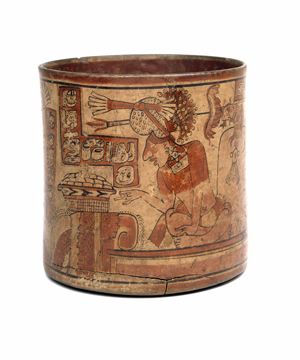Trafficking Culture
 3 September - 24 December 2015
3 September - 24 December 2015
Hunterian Museum
Admission free
This new exhibition highlights current research from the University’s Scottish Centre for Crime and Justice Research into the global traffic in cultural objects, responsible for damaging and destroying archaeological and other cultural sites worldwide.
Real case studies include the theft and trade of artefacts from Guatemala, Cambodia and Italy as well as the looting of archaeological sites in Iraq during the 1990s and 2000s. The exhibition also features special loan items from The British Museum.
The Trafficking Culture project at the University of Glasgow is dedicated to understanding the illicit trade in cultural objects and to developing policies and actions that help to reduce this global crime. Many economically poor regions of the world are rich in cultural objects. Faced with intense market demand for antiquities, people may turn to looting of archaeological sites.
Market demand drives the looting and trafficking of antiquities. Historic tombs are ransacked and temples forcibly dismantled by looters who are the first link in an international supply chain that involves smuggling, violence and fraud. This chain can ultimately lead to some of the most respected museums and collectors in the world. The destruction of archaeological sites depletes and distorts our knowledge of ancient cultures.
The Trafficking Culture project is funded by a €1m grant from the European Research Council, together with grants from the Leverhulme Trust and the Fulbright Program.
To access hundreds of case studies and articles about the looting and trafficking of antiquities please visit the Trafficking Culture website or follow the project on Twitter @CultureTraffic.

